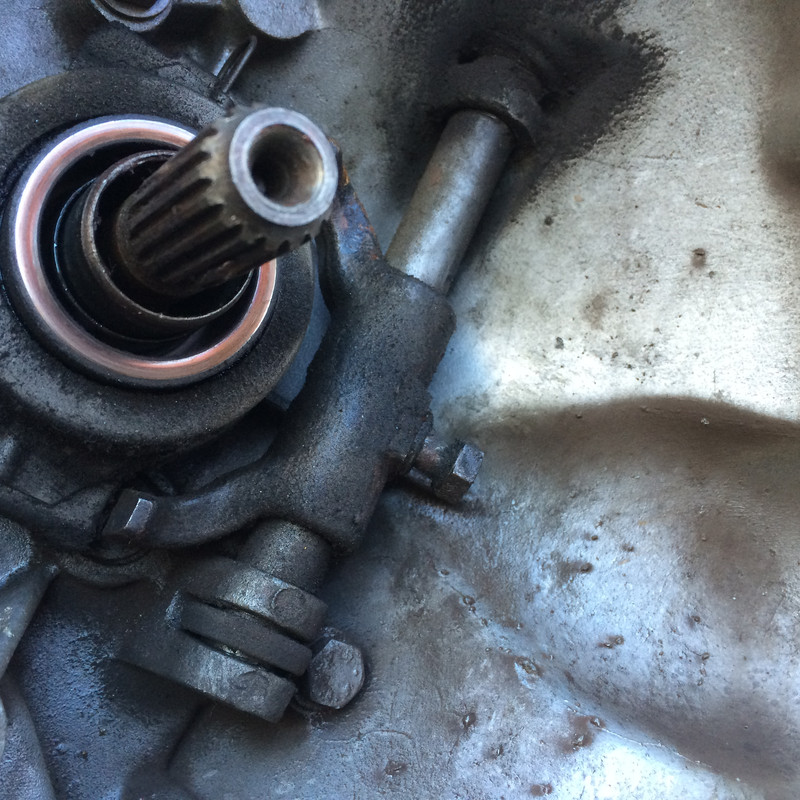Congratulations on getting the lever free. Did the penetrating oil do the trick? Now that it's free, disconnect the large spring and the threaded rod attachments, and work the lever back and forth as far as possible while adding a little more lube (perhaps machine oil) - just to make sure it is cleaned up and moving freely inside the bushing. Also check to see if there is a lot of free play from side to side (as when the pivots are worn). It should move freely but shouldn't have a bunch of 'wiggle' slop.
I totally understand your confusion and questions. Lots of things about these is very odd. I'll try and summarize the excellent relies already posted.
As others have said, on some models (like yours) the large spring is located in the opposite direction from what logic dictates and from what every other car has. As the others stated, there are write ups on how to switch the spring to the other side (using a slightly different spring), or try it with no spring. Personally I prefer having the spring pull the opposite way as yours does. But that requires a couple changes to achieve it - see the referenced link.
As for your other question regarding all the extra stuff you see in the photo - on the very end of that threaded rod. As someone said it also differs on various years. I would not worry about it (I removed it from mine).
Regarding the threaded rod being attached to the lever vs the slave. Actually it isn't really attached to either. It sort of floats between them. If you had the version with the extra hardware on the end of the threaded rod (which you don't), then it would appear to be attached to the lever - although loosely. With your version that end just rests against the lever without any actual 'attachment'. On all versions the other end of that threaded rod just rests against the piston inside the slave (where your sand is living). The hydraulic pressure presses the piston out, which pushes the threaded rod out, which presses on the lever. The reason the threaded rod is threaded is so you can adjust the 'play' between all those items. See the earlier reply about setting the adjustment.
Replacing the clutch master and slave and hoses is a bit of a job. There are several write ups that detail it. One of the biggest issues is getting the line nuts free - they corrode and freeze on much worse that that shaft you just freed. There have been some great tips to help with it. If you don't find them, ask and someone will be able to post a link.


